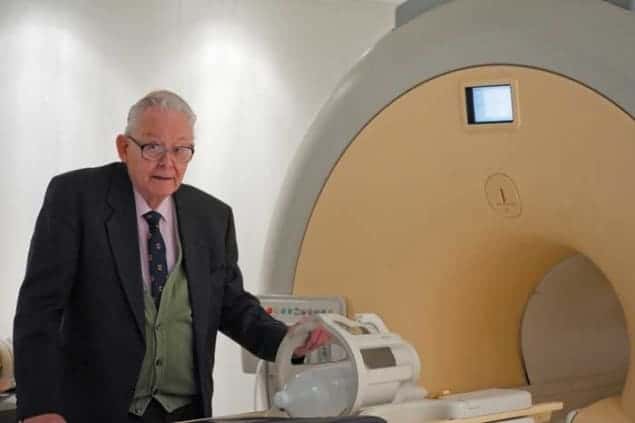Flash Physics is our daily pick of the latest need-to-know developments from the global physics community selected by Physics World‘s team of editors and reporters

MRI pioneer and Nobel laureate Peter Mansfield dies at 83
The UK physicist and Nobel laureate Peter Mansfield has died at the age of 83. Mansfield pioneered the development of Magnetic Resonance Imaging (MRI) for which he was awarded the 2003 Nobel Prize in Physiology or Medicine together with the US chemist Paul Lauterbur. Mansfield was born in London in 1933 and studied physics at Queen Mary College, London, graduating with a BSc in 1959 and a PhD in 1962. After a stint at the University of Illinois at Urbana–Champaign in the US, where he continued his work in Nuclear Magnetic Resonance (NMR), he moved to the UK’s University of Nottingham in 1964 where he remained for the rest of his career. It was there that he developed the use of NMR to image parts of the body and in 1976 produced the first human NMR image that showed a complete finger with bone, bone marrow, nerves and arteries. Two years later he became the first person to step inside the first whole-body scanner, despite warnings that it could be dangerous. MRI – an application of NMR – has since transformed neuroscience and physiology research by providing detailed images of anatomical structure. Mansfield was knighted in 1993 for his services to medical science and retired in 1994.
White dwarf polluted by ingredients for life

The building blocks of life have been found on a “polluted” white dwarf star 200 light-years away. A collaboration between the European Southern Observatory, the University of California, Los Angeles and the University of Montreal were studying the star WD–1425+540 when they observed nitrogen, carbon and oxygen. This is the first time nitrogen has been detected outside of the solar system. Typically, any heavy elements within white dwarfs are not observable because their strong gravitational pull draws the elements into their interiors. Siyi Xu and colleagues therefore attribute WD 1425+540’s pollution to a relatively recent destruction of a Kuiper Belt-like object. The Kuiper Belt is a ring of debris past Neptune’s orbit that surrounds the solar system. Scientists believe that short period comets from the belt may have delivered water and other molecules to Earth, allowing for life to evolve. In the case of WD 1425+540, Xu and team report in Astrophysical Journal Letters that a minor planet, similar to Kuiper-Belt objects, came very close to the white dwarf after a shift in its orbit. The planet was ripped apart by the star’s strong gravitational fields and the remnants went into orbit. Eventually these spiralled into the star, introducing the heavy elements. The researchers believe the event happened in the past 100,000 years or so which is why they could observe the aftermath. The finding confirms that other planetary systems contain Kuiper Belt-like objects. Impacts between these and rocky planets may mean that they contain the building blocks to life.
Flat lens focuses blue and green light

A “flat lens” less than one micron thick that can focus blue and green light has been unveiled by Federico Capasso and colleagues at Harvard University. The lens is an improvement on a similar monochromatic device unveiled by the same group in 2016. The quality of an optical system based on conventional lenses tends to improve with length. This is because multiple curved lenses are needed to correct for chromatic aberration that occurs because light of different colours will take different paths through a simple lens. This causes problems for makers of smartphones and other devices, who want lenses that are as thin, lightweight and simple as possible. In 2016 Capasso’s team unveiled a new type of lens that uses tiny pillars to focus light. The lens could only focus light at one specific wavelength – violet light at 405 nm – which limited its use. All of the nanopillars were of the same shape and size in the 2016 lens – but now the team has shown that a lens made from nanopillars of different sizes can focus blue and green light with wavelengths of 490–550 nm without suffering from chromatic aberration. The lens is made from an array titanium oxide nanopillars that are about 400 nm tall and vary in thickness from 50 to 300 nm. The arrangement, shape, width and height of the nanopillars were all carefully chosen to minimize chromatic aberration for blue and green light. The researchers say that the lens can be made using standard chip manufacturing methods and that early application of the lens could be in imaging, spectroscopy and sensing. The lens is described in Nano Letters.
- You can find all our daily Flash Physics posts in the website’s news section, as well as on Twitter and Facebook using #FlashPhysics. Tune in to physicsworld.com later today to read today’s extensive news story on the Sun’s rotation.



